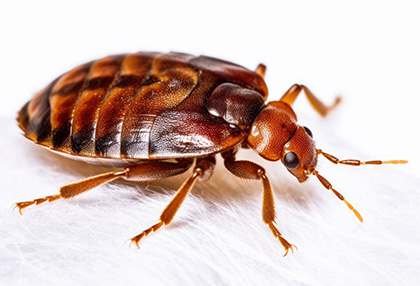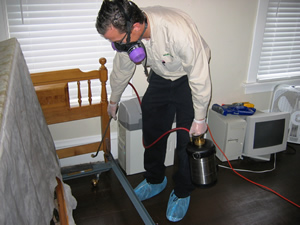Affordable Bed Bug Heat Treatment for Quick and Effective Results
Affordable Bed Bug Heat Treatment for Quick and Effective Results
Blog Article
Get Informed Concerning the Kinds Of Pest Control Approaches and Their Benefits for Home Owners
Understanding the different parasite control methods offered to home owners is important for efficient parasite monitoring. Homeowners who are knowledgeable can make critical selections that not only address pest issues however likewise improve the total high quality of their living setting.
Chemical Pest Control Approaches
Chemical parasite control techniques are an essential component of integrated bug monitoring strategies for property owners seeking efficient services to pest invasions. These techniques include the application of chemical compounds developed to eliminate or discourage insects that threaten personal effects, wellness, and convenience. Typical chemicals used include pesticides, fungicides, rodenticides, and herbicides, each tailored to target specific pests.
The key benefit of chemical insect control is its rapid effectiveness; several formulations supply instant results, reducing pest populaces substantially in a short time. Additionally, breakthroughs in chemical formulas have brought about products that are more eco-friendly and have reduced toxicity degrees for non-target organisms when applied properly.

Biological Insect Control Methods
Natural insect control techniques have acquired prominence as property owners seek safer and more sustainable alternatives to traditional chemical approaches. Biological parasite control strategies make use of all-natural predators, parasites, or pathogens to manage parasite populaces successfully. This technique is not only eco-friendly yet likewise reduces the risk of harm to non-target varieties, consisting of useful insects and wildlife.
Among the most common organic control techniques involves introducing all-natural predators right into the setting. Ladybugs can be made use of to manage aphid populations, while nematodes target soil-dwelling parasites like grubs. Furthermore, parasitoids-- organisms that survive or within a host-- can be employed to control certain insect species by laying eggs inside them, eventually resulting in their death.
One more approach is making use of biopesticides, which are originated from all-natural materials such as microorganisms, plants, or minerals (bed bug exterminator). These items can efficiently target pests while presenting minimal danger to pet dogs and people. On the whole, biological bug control techniques supply homeowners with an effective methods of insect monitoring that aligns with environmental concepts, advertising a healthier living atmosphere while reducing reliance on artificial chemicals
Mechanical Parasite Control Strategies
Mechanical bug control approaches encompass a range of approaches that literally protect against or remove parasites without using chemicals. These methods are specifically beneficial for property owners looking for eco-friendly options while guaranteeing the security of their living areas.
One usual approach is using barriers, such as screens, traps, and internet, which stop parasites from getting in homes or details locations. For example, installing home window displays can effectively maintain pests out, while making use of physical obstacles around yards can prevent bigger bugs like deer or bunnies. Additionally, mechanical traps designed for rats can record and get rid of these bugs without the requirement for hazardous compounds.
Another effective approach includes the use of mops and vacuums to remove parasites straight from surfaces. Regular cleansing and upkeep can dramatically minimize bug populations by removing food resources and concealing spots. Furthermore, using gadgets like ultrasonic pest repellents can deter numerous insects through audio waves that are undesirable to them but faint to humans.
Social Bug Control Practices
Social bug control practices concentrate on changing the setting and management techniques to create problems that are much less favorable to pest problems. These methods are basic in preserving a well balanced environment and reducing the reliance on chemical treatments. By changing farming techniques, property owners can successfully prevent insects while advertising plant health.
One typical strategy includes crop turning, which interferes with the life cycles of bugs by transforming the sorts of plants grown in a certain location (bed bug exterminator). This not only reduces pest populaces yet also improves soil health and wellness. In addition, intercropping-- planting diverse crops in distance-- can puzzle pests and decrease their capability to situate their recommended host plants
Water management is another vital facet check out this site of social techniques. Correct irrigation techniques can avoid standing water, which serves as a breeding ground for mosquitoes and other insects. Preserving tidiness in and around the home, such as frequently eliminating debris and food waste, can considerably decrease pest attraction.
Incorporating these social techniques right into a detailed insect management strategy allows home owners to develop an atmosphere that naturally deters parasites, therefore improving the efficiency of other control approaches while advertising sustainable horticulture and landscape design.

Integrated Parasite Management Approaches
Integrated Parasite Administration (IPM) stands for a holistic strategy that combines different strategies to successfully take care of insect populaces while minimizing ecological influence. This methodology incorporates organic, cultural, physical, and chemical methods to attain sustainable insect control. By examining pest populations and their natural opponents, IPM stresses monitoring and determining bugs prior to implementing control procedures.
Among the core concepts of IPM is the use of thresholds, which establish the degree of parasite activity that requires intervention. This makes sure that therapies are used only when necessary, decreasing the dependence on chemical pesticides. Organic control approaches, such as presenting all-natural killers or bloodsuckers, work in conjunction with cultural practices like crop rotation and habitat control to interrupt pest life cycles.
Moreover, IPM urges the usage of least-toxic chemical alternatives when treatment is essential, focusing on items that posture marginal threat to non-target microorganisms and the setting. For house owners, embracing IPM comes close to not just improves the efficacy of parasite administration but likewise advertises a healthier living setting, fostering biodiversity and reducing chemical exposure. Inevitably, IPM encourages home owners to make enlightened choices that balance pest control with ecological duty.
Verdict
In conclusion, comprehending the numerous pest control techniques encourages homeowners to make educated choices pertaining to pest management. Each method-- chemical, biological, mechanical, social, and incorporated pest management-- provides unique advantages that provide to various demands and preferences.
Understanding important site the different bug control techniques readily available to homeowners is important for efficient bug administration.Chemical bug control approaches are a critical component of integrated pest management techniques for property owners seeking efficient services to pest invasions. In general, biological insect control techniques provide property owners with an efficient means of pest monitoring that straightens with eco-friendly concepts, promoting a healthier living environment while reducing dependence on artificial chemicals.
Cultural insect control practices concentrate on changing the atmosphere and administration techniques to create problems that are much less conducive to pest infestations.In verdict, comprehending the different pest control approaches equips property owners to arrow pest control make informed choices relating to pest administration.
Report this page